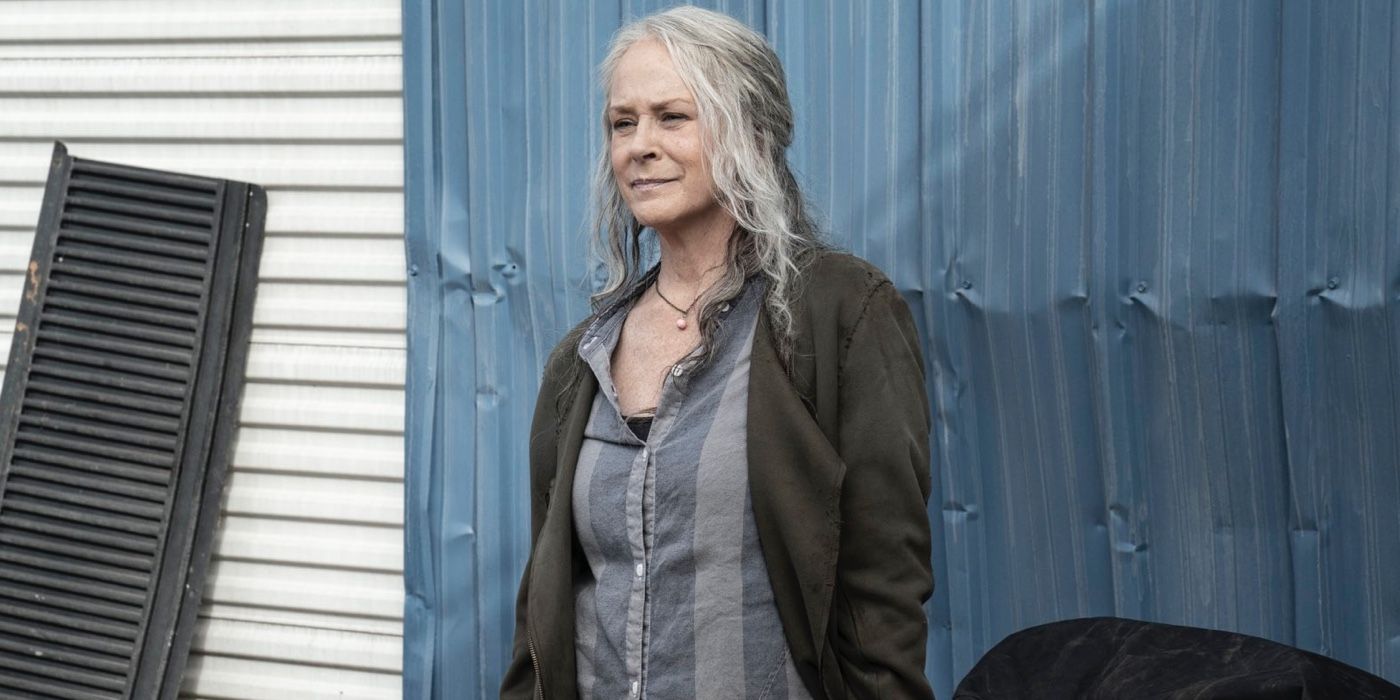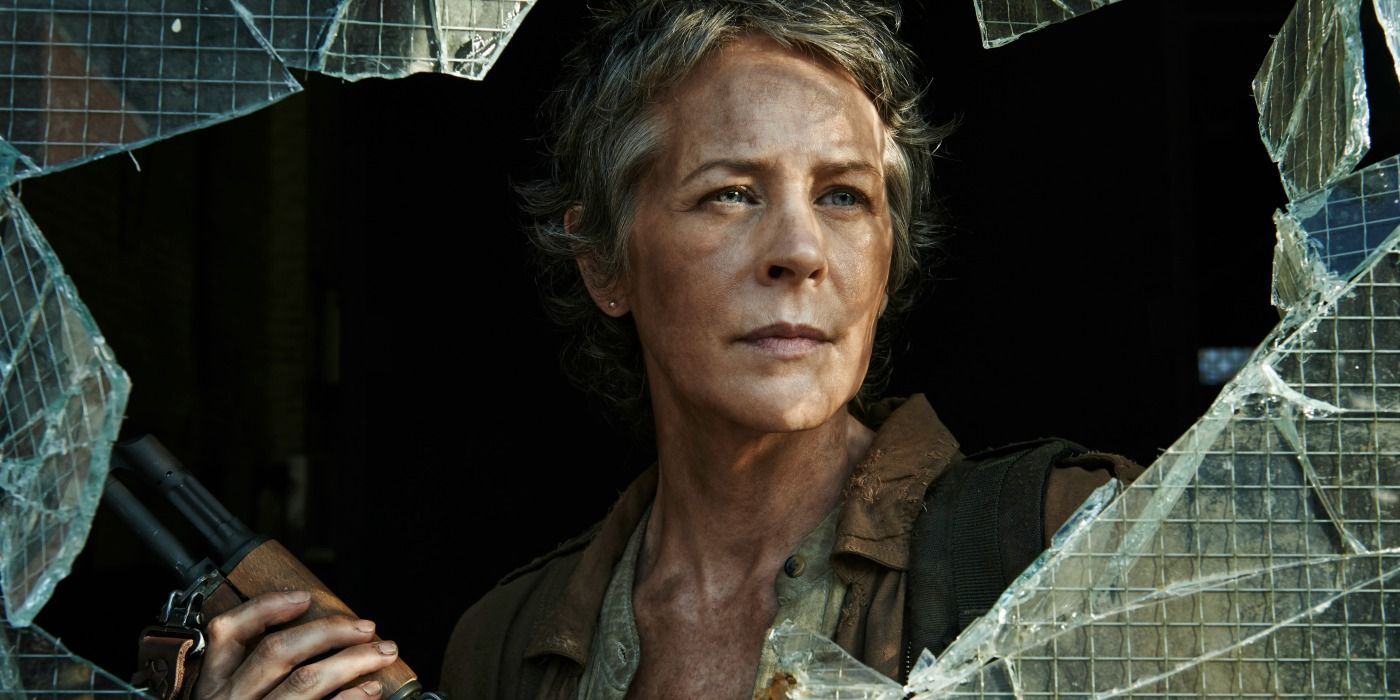
When thinking about some of the greatest adaptation changes in television history, The Walking Dead‘s Carol Peletier is one of the first to come to mind. Her tenure in the comics was incredibly short-lived compared to her active participation in the television universe, thanks to the writers’ seeing her potential for greatness. When adapting her character though, her age is one of the most notable differences.
Portrayed by Melissa McBride on the AMC series (who was also one of the many TWD cast members in The Mist), Carol had one of the most complex arcs as an underdog. In Season 1, she was introduced as a shy and timid homemaker who was abused by her husband, Ed, and focused all her attention on her 12-year-old daughter Sophia. The death of her husband and daughter left a profound effect on her life and made her one of the few TWD characters who benefited from the apocalypse, whereas others suffered the consequences of society collapsing. If her age had remained the same from the comics, her moving story might’ve been told very differently.
Carol’s Age in The Walking Dead Comics vs. TV Show

AMC’s Carol never specifies her age because of how unimportant it is, so viewers have to deduce that she’s the same age as her actor. During Season 1, McBride was in her early to mid-40s. This means that Carol was likely in her early to mid-50s by the final season since over a decade has passed in the entirety of the show.
Viewers who have never read the comics might be surprised to learn that Carol is actually much younger in her original creation, which has great implications for her character. When she’s first introduced in the comics, she’s only 24 years old and has an eight-year-old daughter. Meaning, she was only 16 years old when she had Sophia, and the fact that she was such a young mother isn’t really discussed in the comics. She died at only 25 years old, barely having lived a fulfilling life because she was tied down to her abusive husband and never experienced real independence.
Carol’s Age Difference Spoke to Two Different Generations

It’s unclear if aging up Carol’s character was always the intention, or if it was an automatic choice when McBride was given the role. But the decision does have substantial implications for her character’s longevity in the show, whether people realize it or not. Carol’s age is never an issue or matter of importance in the show — off-screen is a whole other beast, as fans love to debate a woman’s age compared to her male counterpart — because her entire arc rests on her finding the freedom she lost when she married Ed.
If Carol had been in her early to mid-20s in the show, her arc would’ve entirely rested on the fact that she was a teenage mother. Her comic counterpart is incredibly tragic because she was always dependent on someone else’s protection or love. In reality, she was still a child who was forced to grow up at a very young age. But television Carol isn’t attached to that stigma, so instead her arc explores a second chance at life at what many would consider to be “middle-aged.” She represents an entire generation of women who may feel like they’re stuck in life — that their best years are behind them because misogynistic societal standards say so. But Carol proves otherwise, even in a setting where society is broken, and the dead are walking.
Comics Carol would’ve been a riveting journey to tackle on its own. The choice to commit suicide was one brought out of loneliness when people abandoned her and perceived her as a “mad woman” who was too lost to keep sane. This doesn’t mean her ending would’ve been carried out the same in the show if she had been in her 20s. Her glowing transformation could’ve spoken to a younger generation’s mental health issues and a more niche audience of teenage mothers who carry the weight of the family. For the sake of the show, though, Melissa McBride holds the mantle of Carol, establishing one of the most memorable characters that The Walking Dead couldn’t dream of getting rid of.
The Walking Dead is available to stream on Netflix and AMC+.




